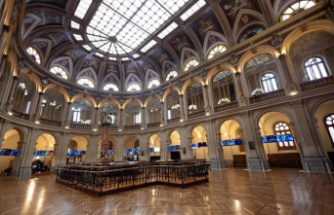The photographer we film is a bit like the “watered sprinkler”, that is to say the one who suffers the same fate that he has inflicted on others.
By pointing her camera at Gabor Szilasi, the young director Joannie Lafrenière, who is herself a photographer, only repeated what the famous Montreal photographer of Hungarian origin allowed himself on thousands and thousands of people. More than 80,000 negatives of all the ordinary Quebecers he photographed are now assured of eternal life in the vaults of Library and Archives Canada.
Even if this man whom everyone calls simply by his first name Gabor is at the end of a career as memorable as that of Henri Cartier-Bresson, one of the most famous photographers in history, too few know him, even if most have been able to see from his photos. I met Gabor a few times, a long time ago, when he was doing his job at the Office du film du Québec. Hundreds of photography students at Cégep du Vieux Montréal and Concordia University will long remember this warm and talkative professor, who still marvels after so many years at the magic that happens in a darkroom.
GABOR FALLS IN LOVE
Like the well-known film producers Robert Lantos and André Link, Gabor fled Hungary in 1956 when the communist government mercilessly crushed the citizens' revolt. Slightly older than his two fellow Hungarians Lantos and Link, Gabor had first tried to flee from Budapest in 1949, but was caught and thrown in prison. After a brief stay in Paris, Gabor settled in Montreal. Like Michel Brault and Pierre Perrault (the directors of the film Pour la suite du monde), he fell in love with the people of Île-aux-Coudres, Charlevoix and Bas-du-Fleuve. Gabor photographed them from all angles.
Joannie Lafrenière's documentary keeps showing the hero with his camera glued to his eye as if it were a monocle or an eye patch. One of the things the film does best is to bring the color image that Gabor has just frozen in his camera to the big screen in black and white. This trick has the merit of making us see that once framed by a brilliant photographer, a scene that seemed banal even in color turns out to be exceptional in black and white.
A PART OF OUR HISTORY
Joannie's film, which has already toured several festivals, including Toronto's Hot Docs, the Atlanta Film Festival and Vues sur mer de Gaspé, where it received a special mention, will be released tomorrow evening ( Friday) at Cinéma Beaubien. It will then be presented at the Cinéma Le Clap in Sainte-Foy, then at the Maison du Cinéma in Sherbrooke.
The documentary often shows Gabor thinking out loud. “Photography, he drops, is a poem, whereas cinema is a novel! »
If I had to paraphrase Gabor, I would rather say that Joannie Lafenière's film is a "river novel". Lasting 1 hour and 41 minutes, his film is often repetitive and drags on. The director would do well to take some distance and see him again. She would no doubt find that she let herself be carried away by the undeniable benevolence and obvious humanity of this extraordinary photographer whose photos mark a whole section of our history. “My father, his daughter Andréa rightly says, it’s just creativity and love! »













